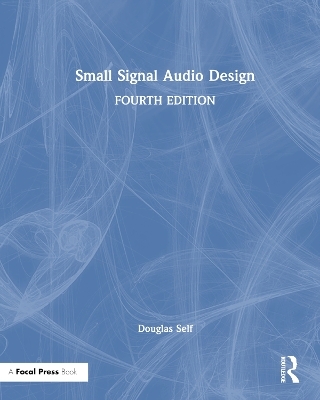
Small Signal Audio Design
Focal Press (Verlag)
978-1-032-36627-2 (ISBN)
Small Signal Audio Design is a highly practical handbook providing an extensive repertoire of circuits that can be assembled to make almost any type of audio system. This fully revised fourth edition offers wholly new content on internally balanced audio design, electret microphones, emitter-follower stability, microphony in capacitors, and much, much more.
This book continues the engaging prose style familiar to readers as you learn why mercury-filled cables are not a good idea, the pitfalls of plating gold on copper, and what quotes from Star Trek have to do with PCB design.
Learn how to:
make amplifiers with apparently impossibly low noise
design discrete circuitry that can handle enormous signals with vanishingly low distortion
transform the performance of low-cost opamps
build active filters with very low noise and distortion while saving money on expensive capacitors
make incredibly accurate volume controls
make a huge variety of audio equalisers
use load synthesis to make magnetic cartridge preamplifiers that have noise so low it is limited by basic physics
sum, switch, clip, compress, and route audio signals
build simple but ultra-low noise power supplies
be confident that phase perception is not an issue
Including all the crucial theories, but with minimal mathematics, Small Signal Audio Design is the must-have companion for anyone studying, researching, or working in audio engineering and audio electronics.
Douglas Self studied engineering at Cambridge University then psychoacoustics at Sussex University. He has spent many years working at the top level of design in both the professional audio and hifi industries and has taken out a number of patents in the field of audio technology. He currently acts as a consultant engineer in the field of audio design.
1. The basics; 2. Components; 3. Discrete transistor circuitry; 4. Opamps and their properties; 5. Opamps for low voltages; 6. Filters; 7. Preamp architecture; 8. Variable gain stages; 9. Moving-magnet inputs: levels and RIAA equalisation; 10. Moving-coil head amplifiers; 11. Tape replay; 12. Guitar preamplifiers; 13. Volume controls; 14. Balance controls; 15. Tone controls and equalisers; 16. Mixer architecture; 17. Microphone preamplifiers; 18. Line inputs; 19. Line outputs; 20. Headphone amplifiers; 21. Signal switching; 22. Mixer sub-systems; 23. Level indication and metering; 24. Gain-control elements; 25. Power supplies; 26. Interfacing with the digital domain; 27. Design and experimentation
| Erscheinungsdatum | 28.12.2023 |
|---|---|
| Zusatzinfo | 128 Tables, black and white; 348 Line drawings, black and white; 217 Halftones, black and white; 565 Illustrations, black and white |
| Verlagsort | Oxford |
| Sprache | englisch |
| Maße | 191 x 235 mm |
| Gewicht | 2154 g |
| Themenwelt | Kunst / Musik / Theater |
| Mathematik / Informatik ► Informatik | |
| Technik ► Umwelttechnik / Biotechnologie | |
| ISBN-10 | 1-032-36627-3 / 1032366273 |
| ISBN-13 | 978-1-032-36627-2 / 9781032366272 |
| Zustand | Neuware |
| Informationen gemäß Produktsicherheitsverordnung (GPSR) | |
| Haben Sie eine Frage zum Produkt? |
aus dem Bereich


